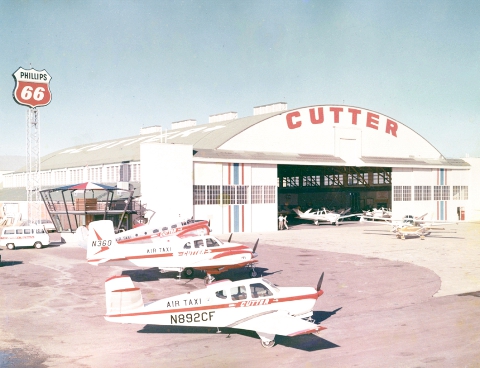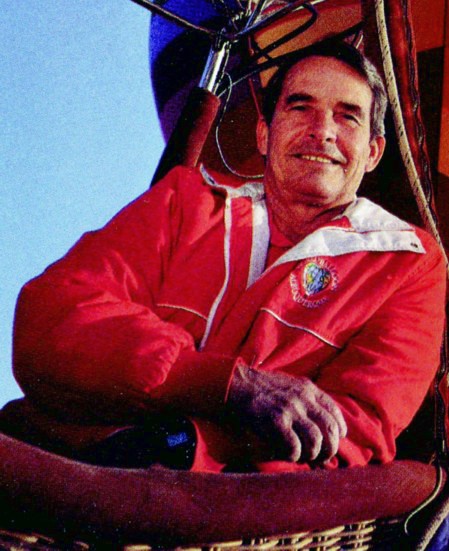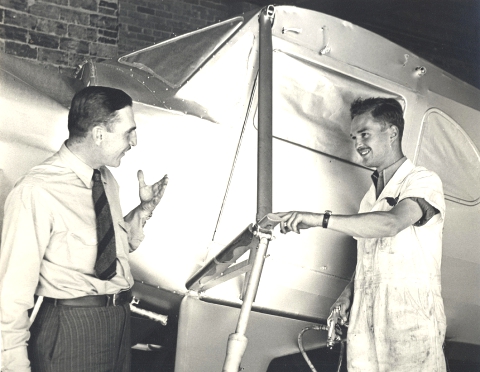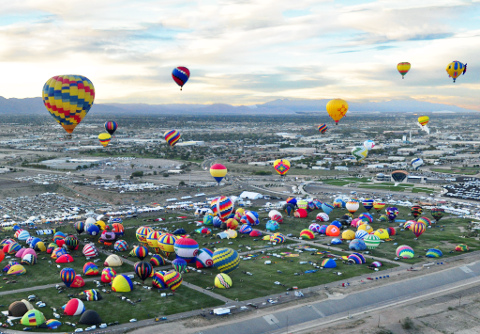A History Of Balloon Fiesta: How Media Marketing Transformed The Autumn Sky
How Media Marketing Transformed The Autumn Sky


Cutting Flying Service aircraft hangar circa 1960s
Cutter Aviation

William P. and Virginia Dillon Cutter pose with a Beachcraft Bonanza.
Cutter Aviation

Ben and Pat Abruzzo were passionate about ballooning. The couple died in a plane crash near Albuquerque together in 1985.
National Balloon Museum

Maxie Anderson
National Balloon Museum

Sid Cutter in the technicolor ’80s
National Balloon Museum

Double Eagle II over Normandy
Bettman Archives

William Cutter chats with a mechanic out on the West Mesa
Cutter Aviation











